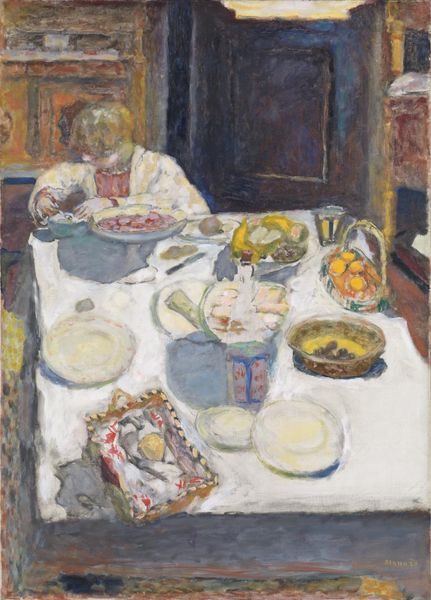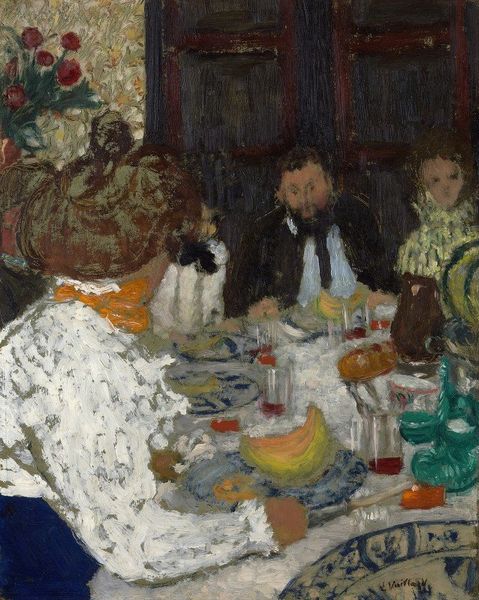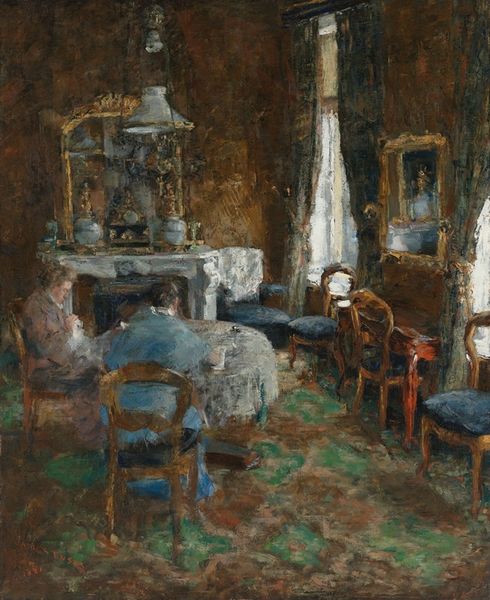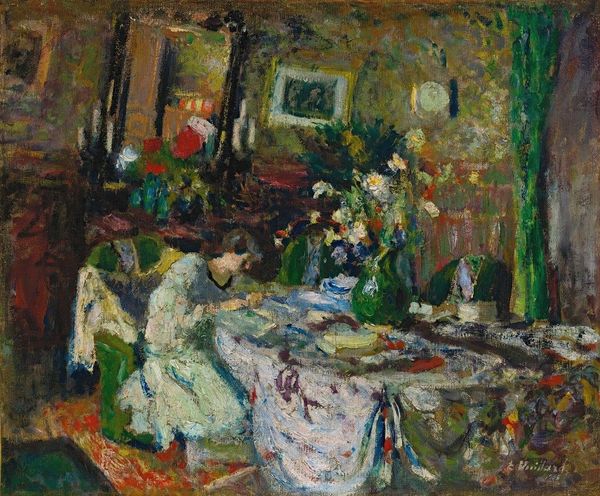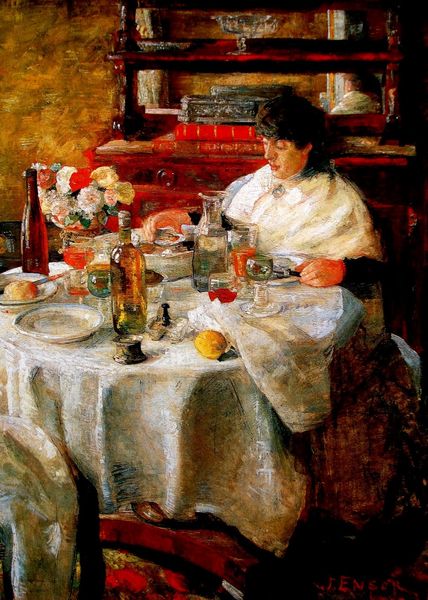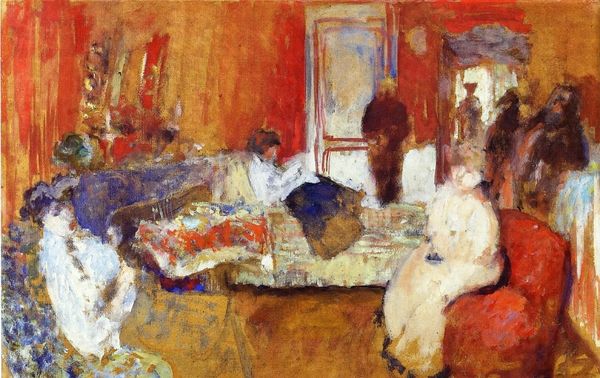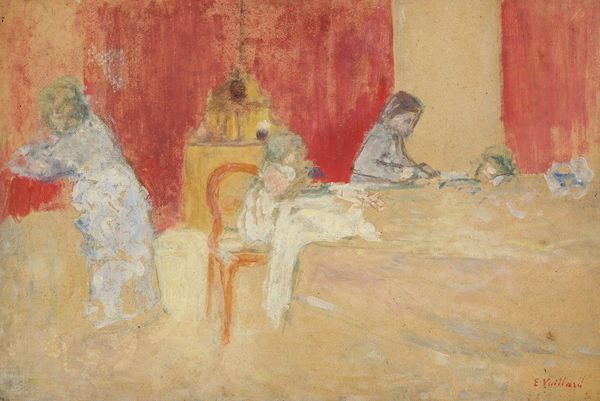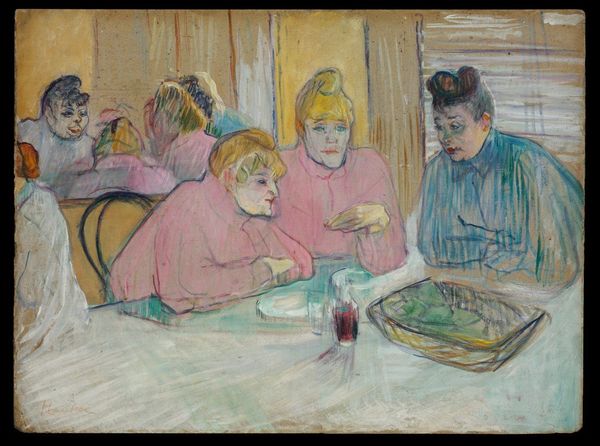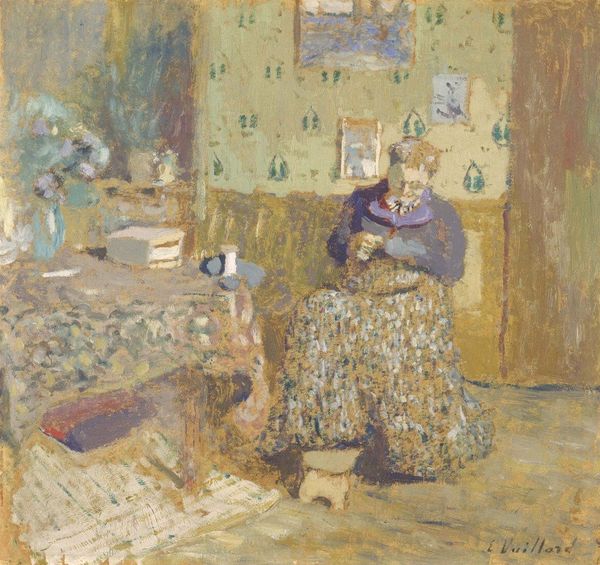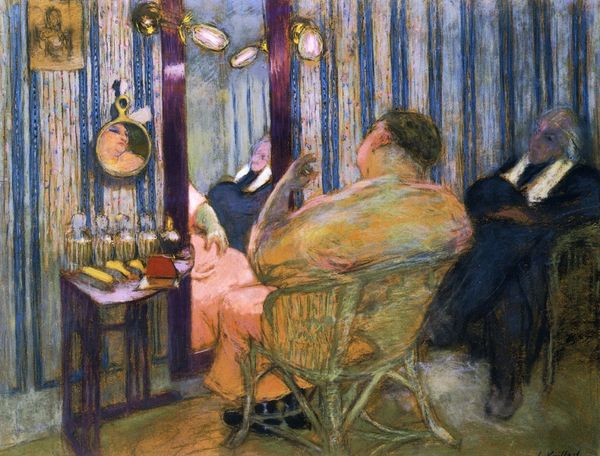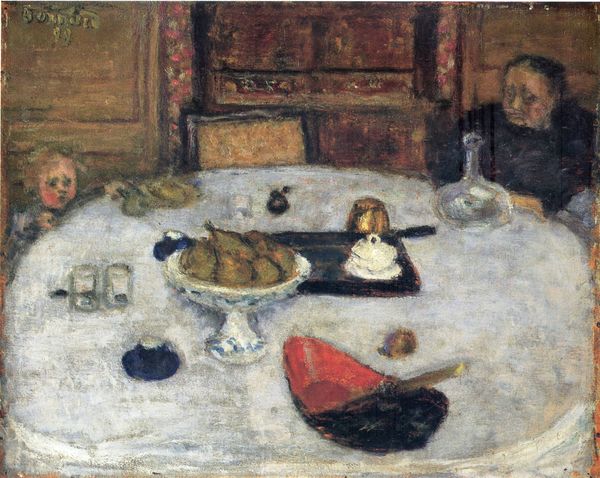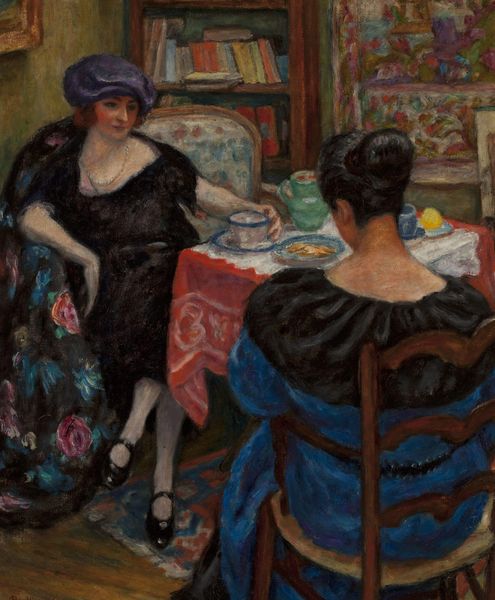
Dimensions: 90.2 x 106.7 cm
Copyright: Public domain
Editor: Here we have Pierre Bonnard's "Before Dinner" from 1924. It’s an oil painting depicting a domestic scene. I'm struck by the intimacy and quiet anticipation of the subjects. What do you see in this piece? Curator: I see a fascinating tableau of bourgeois life in early 20th century France. Bonnard's artistic circle – and the institutional support it enjoyed – played a key role in shaping the narrative around "intimist" art. Does it strike you as strange that Bonnard shows these women not *during* the dinner, but *before*? Editor: It's almost as if he's capturing a moment of poised reflection before social interactions take over. Curator: Exactly. Bonnard captures that pre-dinner stillness – it’s also about the display of domestic ritual itself. Note the emphasis on the arranged table – the silverware, the glasses, the implication of wealth and societal standing. Does that reflect reality, or does Bonnard imbue his art with societal commentary? Editor: Possibly a little of both? There's an argument to be made about how he highlights, and perhaps elevates, these traditionally "feminine" spaces and moments. Curator: An interesting idea! Given his audience – comprised largely of the middle and upper classes, don't you find his seemingly mundane subject choices, and treatment of interior scenes, a potentially powerful commentary on the values of the era? How would this image be received if displayed in a public institution versus a private residence? Editor: Good point. Seeing it in a museum gives it a weight and permanence that's different than if it was just in someone's home. Thanks for helping me look at it with that context in mind. Curator: My pleasure. Thinking about the social space where art exists truly opens our eyes to its power.
Comments
No comments
Be the first to comment and join the conversation on the ultimate creative platform.
